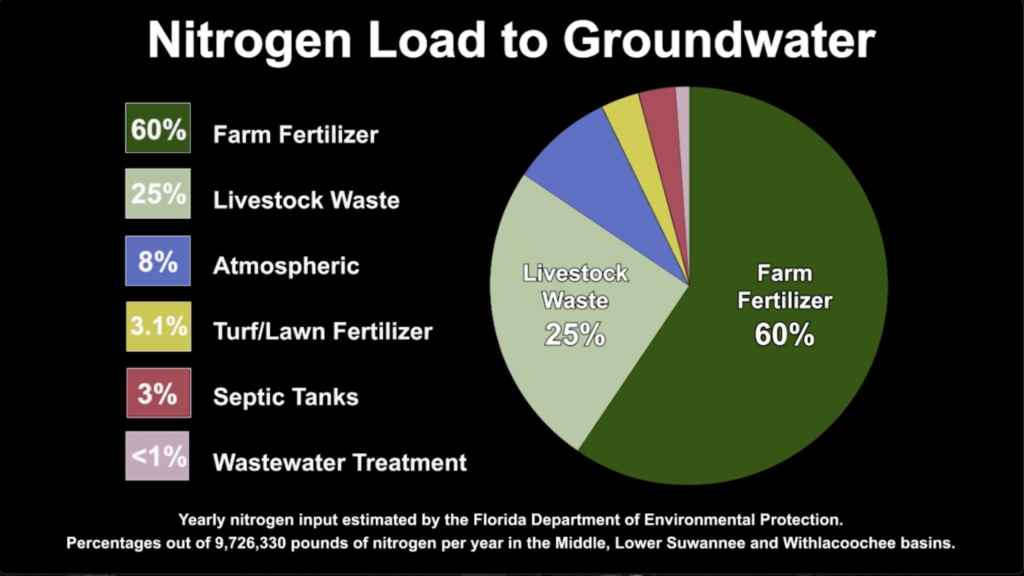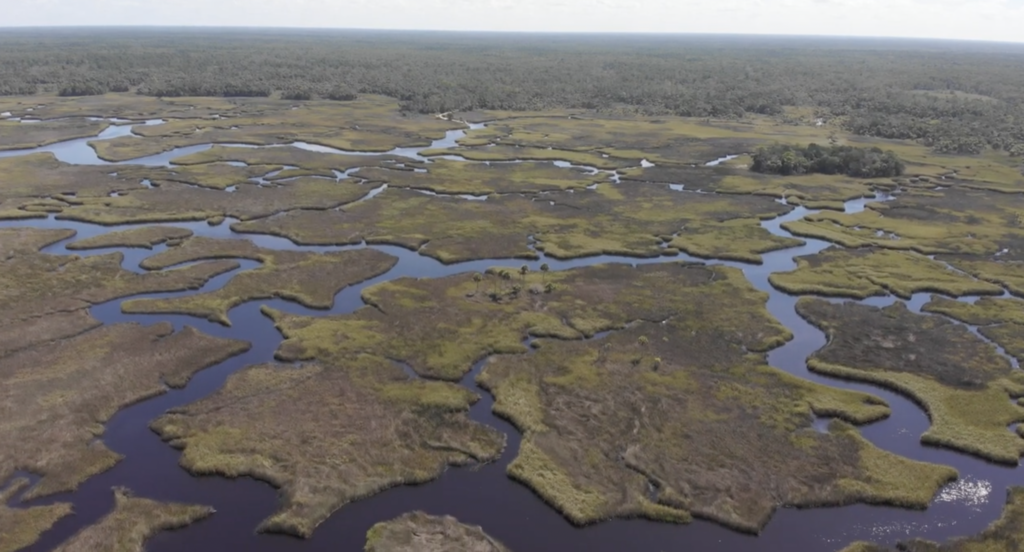The Human Connection
Scroll to explore The Middle Suwannee
It’s all connected to the aquifer.
As the top layer of clay soils erode down the Cody Scarp, the soil becomes easily drained and better suited for Agriculture. The fertile ground allows for farms to stretch out creating a mosaic pattern when viewed from above.
Agriculture is Florida’s second-largest industry, behind tourism. But both tourism and agriculture rely on the health of Florida’s water systems, which are advertised as pristine landscapes. A visitor to Florida might look at one of Florida’s hundreds of artesian springs and see nothing but beautiful crystal-clear water.
The springs, however, are showing clear signs of increasing pollution from nitrates and strain from over-pumping the aquifer.
Scroll down to see how agricultural land use has grown over time. (Images may take time to load)
For performance reasons only one shortcode is allowed in Scrollsequence FREE.
Upgrade to PRO version for unlimited shortcodes.
Because the soil in the middle Suwannee is so easily drained, it requires large amounts of irrigation, which is pumped straight from the groundwater supply. In Florida, there is no limit to the amount of groundwater that can be pumped and there is no price per amount pumped. In the Suwannee basin, the predominant use of water is for agricultural purposes.

Agriculture along the Suwannee also requires large amounts of fertilizer to optimize the yield of crops such as corn, peanuts, hay, beans, carrots and watermelons. Fertilizers contain nitrogen, which when irrigated, can easily permeate down into the soil and the aquifer. The Florida Department of Environmental Protection estimates that agriculture accounts for 85 percent of the total nitrogen load into groundwater from the three major agricultural influence regions in the Suwannee basin.
Once nitrate pollutants enter the aquifer it is nearly impossible to remove them, as they are either pumped continuously through a cycle between ground and surface water, or become trapped inside of the aquifer itself.
High nitrate levels in springs and other water sources can result in algal blooms, which destroy native aquatic vegetation by blocking out sunlight needed for photosynthesis and reducing the amount of dissolved oxygen in the water. This can cause entire ecosystems to collapse as the food chain is completely altered from its natural state.
The entire Floridian aquifer is connected and this interconnectivity is observed in the way that human impacts have affected the natural water system.
